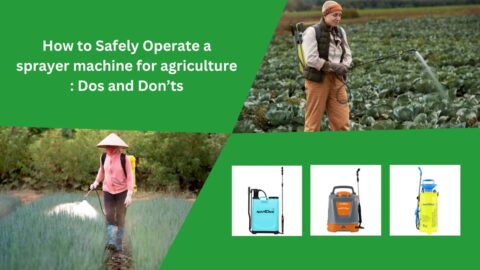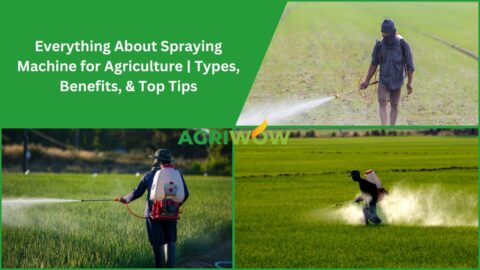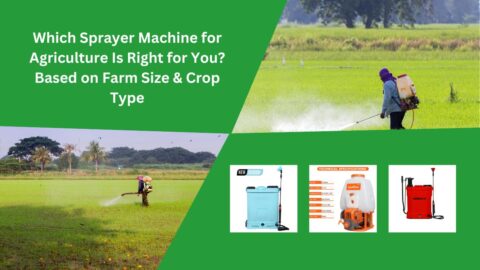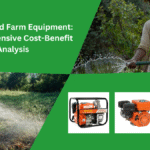In modern farming, the timely and safe application of pesticides, herbicides, fungicides, and liquid fertilizers is critical to ensuring crop health and maximizing yield. One of the most important tools in this process is the sprayer machine for agriculture. When used properly, it enhances precision, reduces chemical waste, and safeguards both the farmer and the environment.
Using a spraying machine for agriculture effectively is more than just filling the tank and pulling the trigger. It involves understanding your equipment, calibrating it correctly, preparing the right chemical solution, wearing the appropriate safety gear, and applying the treatment methodically. These steps are crucial not only for successful pest and weed control but also for maintaining the safety of the operator and surrounding ecosystems.
Before using any manual spray pump or motorized sprayer, it’s essential to read the manufacturer’s manual. This ensures you understand how the equipment functions, what kind of chemicals it can handle, and how to clean and store it properly. Most importantly, it helps avoid common mistakes that could lead to ineffective spraying or even injury.
Knapsack Sprayer is the best way to spray pesticide, herbicides and other liquid on an agricultural
Among the many options available, the knapsack sprayer stands out as one of the most reliable tools for small to medium-sized farms. Its backpack-style design allows farmers to move easily between rows and reach corners that are often missed by larger equipment. It is especially useful for spot treatments and targeted applications of pesticide or fertilizer.
What makes a knapsack sprayer so effective is the operator’s direct control over the nozzle and pressure. This ensures an even distribution of chemicals, reducing the risk of over-application or under-application. A consistent spray pattern also minimizes the possibility of chemical drift, which can be harmful to nearby crops or natural habitats.
For many farmers, especially those working on smaller plots or with specific pest issues, a manual spray pump provides an affordable and simple solution. These pumps are easy to maintain and require no external power source, making them ideal for rural or off-grid agricultural settings.
Some advanced models, such as the Neptune sprayer pump, combine portability with added features like adjustable nozzles, chemical-resistant tanks, and pressure control systems. These innovations make them a top choice for farmers seeking durability and precision in their spraying operations.
What it’s like to spray a farm
Spraying a field with pesticides or herbicides is a task that requires focus, planning, and awareness of environmental conditions. It starts with identifying the problem—whether it’s a pest infestation, a fungal outbreak, or a weed invasion—and selecting the correct chemical solution.
Next, the chemical is diluted as per the instructions and poured into the sprayer tank. When using a sprayer machine for agriculture, it’s important to check for leaks, ensure the nozzles are clean, and test the pressure levels before heading into the field.
With the sprayer secured—either as a backpack or a trolley system—the farmer walks through the field in a systematic pattern. The nozzle is held at the proper angle, and the trigger is pulled in a consistent rhythm to achieve even coverage. Wind direction, plant density, and walking speed all affect the quality of application.
There’s also a level of intuition and experience involved. Skilled operators adjust their speed, pressure, and nozzle settings depending on the crop and the type of chemical being used. Throughout the process, they remain alert to avoid overlapping or missing areas.
Above all, safety is paramount. Wearing PPE (personal protective equipment) such as gloves, face masks, goggles, and long sleeves is non-negotiable. These precautions protect the skin, eyes, and respiratory system from potential exposure to hazardous chemicals.
Ensure an efficient pest control process with our advanced pesticide spraying machine
Choosing the right spraying machine for agriculture can make a significant difference in pest control effectiveness. Our advanced pesticide sprayers are engineered with ease of use, performance, and operator comfort in mind. Features like anti-drip nozzles, ergonomic handles, and strong chemical-resistant materials ensure better application with less fatigue.
To achieve the best results, it’s crucial to calibrate your sprayer before use. Calibration means measuring how much liquid the sprayer dispenses over a given area, helping ensure you apply the correct amount of chemical per acre or hectare. Without calibration, there’s a high risk of overuse—which wastes chemicals and can damage crops—or underuse, which leads to ineffective pest control.
Additionally, consistent maintenance is necessary. Clean the nozzles after every use to prevent clogging. Check for wear and tear in hoses and seals. Store the sprayer in a dry, shaded area. Whether you’re using a Neptune sprayer pump or another model, these habits will extend the lifespan of your equipment and keep it running efficiently.
By combining proper technique, modern technology, and a focus on safety, farmers can harness the full potential of the sprayer machine for agriculture. This contributes not only to improved pest and weed management but also to higher productivity, better harvests, and a more sustainable farming future.
FAQ
Q1. What are the safety practices to be followed when working with sprayers?
Always follow the application rate as directed on the product label. Always wear eye protection, gloves, a long-sleeve shirt and long-leg pants when handling chemicals, and take your time when mixing. Triple-rinse empty pesticide containers and do not reuse them; dispose of empty containers properly after rinsing.
Q2. How do you maintain a sprayer in agriculture?
Cleaning and maintenance of the sprayer
If the filter of the handle is clogged, remove it and clean it with water. Store the sprayer under cover, avoiding freezing temperatures and extreme heat (between 5°C and 30°C). To prolong the life of the seals, regularly apply grease to the moving parts of the sprayer.










